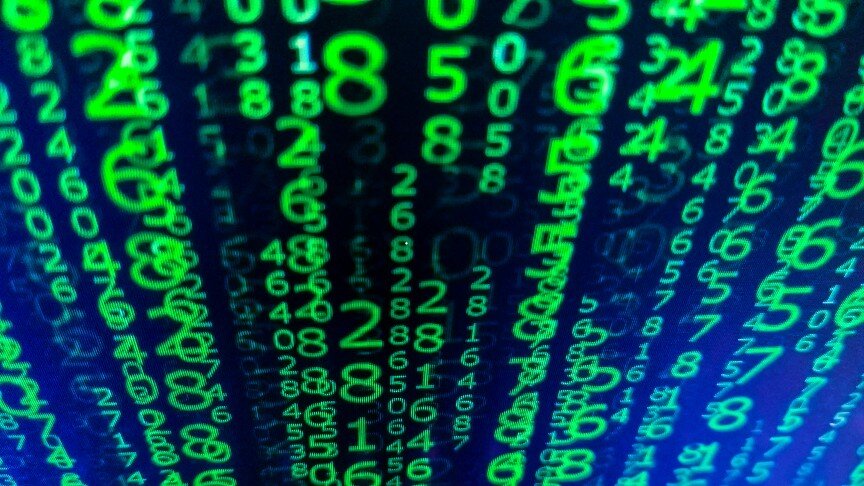Highlighting Australia
- As a proudly Australian initiative, we’re excited to showcase a collection of Australian stories, music, tributes and more.

Join activities, celebrations, study groups, spiritual empowerment and education programs for young people, and more.
Baha’i beliefs address essential spiritual themes for humanity’s collective and individual advancement. Learn more about these and more.


Last year I rewatched that late 1990s blockbuster The Matrix for the first time in 20 years and found that its ideas and concepts, such as taking the red pill or blue pill, a metaphor for choosing to be awakened or choosing to remain in ignorance, still resonate. Oddly, though, as the film went on I sensed there were some Baha’i-like concepts at play as well. Is that a stretch? On the surface The Matrix is a dizzying action film that could be a war movie with a French Resistance (the awakened humans) dodging the Nazis (agents of the A.I. that controls Earth). Also familiar is the hero’s journey where the lead character Neo fittingly starts as a cubicle drone, awakens to his true surroundings, and then emerges as nascent saviour of humanity. That theme ties into a quasi-Christian subtext that includes a “promised one,” a John the Baptist-like prophet, a Judas, and even a resurrection. In recent years the film’s directors have stated that they had actually made a transgender allegory. So despite its Hollywood veneer there is a lot going on beneath the surface. I would argue, though, that at its core The Matrix is a liberation film with a clever twist, and it is this aspect of the movie that got my attention as a Baha’i.
Before continuing I should mention here that I am not the first to have found a connection between The Matrix and the teachings and principles of the Baha’i Faith, something I discovered after starting this this essay.1 But it bears repeating that the concept of a “matrix” in which humanity unwittingly exists was detailed in 1912 by Abdu’l-Baha during His many talks on spirituality given to American and Canadian audiences during His travels. I do not mean that the Master articulated something vaguely reminiscent of ideas from The Matrix. On the contrary, He literally used the word “matrix” which appears 18 times in the book that recounts those talks, The Promulgation of Universal Peace. As Abdu’l-Baha described it, the pre-birth womb-world is a “matrix” from which we are born. The material world is also a “matrix” where humans are unaware of a higher reality that surrounds them, but into which they can liberate themselves:
Before his first or physical birth man was in the world of the matrix. He had no knowledge of this world; his eyes could not see; his ears could not hear. When he was born from the world of the matrix, he beheld another world…. Similarly, as long as man is in the matrix of the human world, as long as he is the captive of nature, he is out of touch and without knowledge of the universe of the Kingdom. If he attains rebirth while in the world of nature, he will become informed of the divine world.2
Overall the movie is a brooding, materialist version of Abdu’l-Baha’s description of the world as a matrix within an unseen beyond that is supremely positive. Baha’u’llah taught of the incomparable beauty and sublimity of the infinite worlds of God—the true existence beyond this physical life—a place of light and purity where the virtues we have acquired and polished in this life will serve us well. Thus to strive to live in accordance with Baha’i teachings, to submit to the will of God, or to act for the betterment of humanity, among other actions, can liberate us from the chains of desire and attachment that artificially bind us to this physical existence and keep us in the matrix that Abdu’l Baha described. As such, Baha’u’llah’s teachings serve as a sort of “red pill” designed to free us from the material world that obscures higher reality.
Similarly, in The Matrix we learn that what is perceived as real is merely a facade masking an unseen truth. When Neo intuits that something is wrong with the world he is offered the chance to remove the veil through the use of a psychoactive drug, a red pill. There is also a blue pill that returns one to the ignorant bliss of regular life, no questions asked. Neo opts for the red one and quickly learns the terrible truth about late twentieth century earth: it is a simulation created for the sleeping masses in order to hide both their slavery and what lies beneath the matrix, which is a hellish post-apocalyptic earth. The movie, it should be said, depicts this especially well with unsettling imagery. After ingesting the red pill a person is “born” into the actual world, and we watch Neo undergo this birth from the pod where his physical body was used by A.I. as a battery. That moment is the first act of liberation, but not everyone who takes the red pill can handle it. Reality, you see, is such a miserable place that the Judas-character Cypher is driven to betray his comrades in order to return to the simulated earth where he is promised that he will forget all about what lies beneath the matrix. So whether one chooses the hellish real world or the simulation, The Matrix serves only to give the audience a desolate vision of existence where humans are described as a “virus” and the authorities are fascistic killers. On top of that the other awakened characters, though vaguely noble, could not be described as spiritually elevated with the exception of perhaps Morpheus. In fact the little ragtag band of freed humans are hardly different in thought and behaviour from those in the simulation except that they are no longer fooled by the matrix. Rather than being spiritually advanced, the red-pilled are portrayed as little better than sewer rats struggling for survival among the ruins of civilization hoping to be saved by the Promised One. The word bleak hardly begins to describe the directors’ dystopian vision despite its promise of liberation and ostensibly a brighter future once humanity is saved. In contrast, when a person takes the Baha’i version of the red pill he or she is filled with hope for the future, recognizes the oneness of humanity, and is indeed born anew.
Dark and violent, The Matrix is nonetheless a thought-provoking and enduring film whose deeper themes have become well established in modern culture. But what, one may ask, are the ramifications of taking Abdu’l-Baha’s elevated concept of liberation from the matrix of material existence into the world of spirit, compared to a liberation for liberation’s sake that literally plunges one into misery and darkness? In this respect Abdu’l-Baha’s 1912 explanations of reality and The Matrix’s key plot point could not be more different. Perhaps a glimmer of light, though, is that the movie’s big idea briefly overlaps with an important Baha’i concept. As such, it might be a good talking point when raising metaphysical ideas with others. A movie-night Fireside anyone? The red pill is a genuinely interesting idea, and so is the matrix.
"*" indicates required fields

We recognise their continuing connection to land, waters and community. We pay our respects to Aboriginal and Torres Strait Islander people and their cultures; and to elders both past and present.
The views expressed in our content reflect individual perspectives and do not represent authoritative views of the Baha’i Faith.

Visit the site of the
Australian Baha’i Community
and the Baha’i Faith Worldwide
Notifications